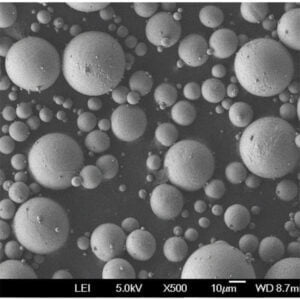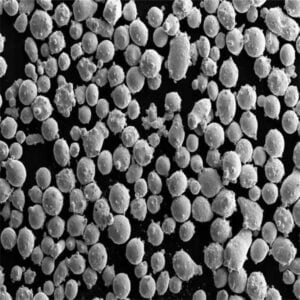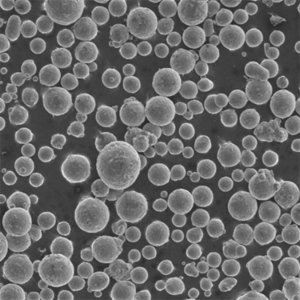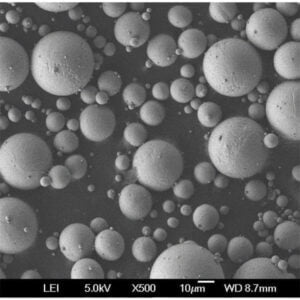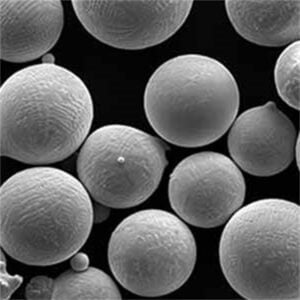指向性エネルギー蒸着(DED)
目次
指向性エネルギー蒸着(DED) は、金属加工の世界に革命をもたらしている洗練された積層造形技術です。あなたが熟練したエンジニアであれ、好奇心旺盛な技術愛好家であれ、初めて3Dプリンティングに飛び込む人であれ、この記事ではDEDのあらゆる側面について説明します。基礎から高度な応用まで、親しみやすい会話形式で解説します。
指向性エネルギー蒸着(DED)の概要
直接エネルギー蒸着は、レーザー、電子ビーム、プラズマアークなどの集束エネルギー源を使用して、材料(通常は金属粉末やワイヤー)を溶かすプロセスです。この溶けた材料を、必要な場所に正確に、層ごとに蒸着させ、三次元物体を作り上げる。ハイテク溶接プロセスのようなものだが、極めて精密でコントロールしやすい。
指向性エネルギー蒸着(DED)システムの種類
DEDシステムは、使用されるエネルギー源と材料によって大きく異なります。以下はその内訳である:
| タイプ | エネルギー源 | 素材 | 主な特徴 |
|---|---|---|---|
| レーザーベースDED | レーザー | 金属粉/ワイヤー | 高精度、優れた表面仕上げ、汎用性 |
| 電子ビームDED | 電子ビーム | 金属粉/ワイヤー | エネルギー効率が高く、高融点金属に適している。 |
| プラズマアークDED | プラズマアーク | 金属粉/ワイヤー | コスト効率、堅牢性、大型部品に最適 |
それぞれのタイプには長所と短所があり、異なる用途に適している。例えば、レーザーベースのシステムはその精度で知られ、航空宇宙部品に最適である一方、プラズマアークシステムは大型部品の生産における費用対効果で好まれている。
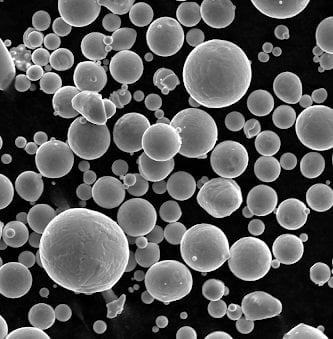
指向性エネルギー蒸着のための金属粉末モデル
DEDプロセスの成功には、適切な金属粉末を選択することが重要です。ここでは、DEDで使用される一般的な10種類の金属粉末を、その説明とともに紹介する:
- インコネル718:高い強度と耐食性で知られるニッケルクロム合金で、航空宇宙や高温用途に最適。
- Ti-6Al-4V(チタングレード5):このチタン合金は、その高い強度対重量比と優れた耐食性で知られ、航空宇宙および生物医学用途で一般的に使用されています。
- ステンレススチール316L:オーステナイト系ステンレス鋼で、耐食性に優れ、機械的性質も良好である。
- AlSi10Mg:強度と熱特性に優れたアルミニウム合金で、自動車や航空宇宙産業で広く使用されている。
- コバルトクロム(CoCr):高い耐摩耗性と生体適合性で知られ、歯科用および整形外科用インプラントに最適。
- 工具鋼 H13:優れた靭性と耐熱性を持つ熱間加工用工具鋼で、ダイカストや押出用途に最適。
- 銅(Cu):優れた電気伝導性と熱伝導性を持ち、電気部品や熱交換器に使用される。
- ニッケル合金625:高強度で耐酸化性、耐食性に優れたニッケル基超合金。
- マレージング鋼:高い強度と靭性で知られ、航空宇宙や工具用途によく使用される。
- アルミニウム 7075:強度の高いアルミニウム合金で、航空宇宙や軍事用途によく使用される。
の応用 指向性エネルギー蒸着(DED)
DEDテクノロジーは、さまざまな業界で幅広く応用されています。ここでは、最も一般的な用途のいくつかをご紹介します:
| 申し込み | 産業 | 例 |
|---|---|---|
| 航空宇宙 | 航空宇宙 | タービンブレード、構造部品 |
| メディカル | バイオメディカル | カスタムインプラント、補綴 |
| 自動車 | 自動車 | エンジン部品、試作部品 |
| 工具 | 製造業 | 金型、金型、金型治具 |
| エネルギー | エネルギー | タービン部品、熱交換器 |
| マリン | マリン | プロペラ、構造部品 |
| ディフェンス | ディフェンス | 武装部品、軍装品の修理 |
DEDにおける金属粉末の仕様と規格
DED用の金属粉末を選ぶ際には、品質と性能を確保するために様々な仕様や規格を考慮することが不可欠です。以下はその主な内容である:
| 素材 | 粒子径 | 純度 | 規格 |
|---|---|---|---|
| インコネル718 | 15-45 µm | >99.9% | ASMB637、AMS5662 |
| Ti-6Al-4V | 15-45 µm | >99.5% | アストマ F2924、アムス 4998 |
| ステンレススチール316L | 15-45 µm | >99.5% | アストマ F3184、アムス 5653 |
| AlSi10Mg | 20-63 µm | >99.5% | en 1706, astm b85 |
| コバルトクロム(CoCr) | 15-45 µm | >99.9% | ASTM F75、ISO 5832-4 |
| 工具鋼 H13 | 15-45 µm | >99.9% | アストマムA681、アムス6487 |
| 銅(Cu) | 15-45 µm | >99.9% | ASMB216、ISO9208 |
| ニッケル合金625 | 15-45 µm | >99.9% | ASMB443、AMS5599 |
| マレージング鋼 | 15-45 µm | >99.9% | AMS6514、ASM538 |
| アルミニウム 7075 | 20-63 µm | >99.5% | ASMB211、AMS4045 |
金属粉末のサプライヤーと価格詳細
市場と価格の詳細を理解することは、予算と計画を立てるために不可欠です。ここでは、DEDに使用される様々な金属粉末の主要サプライヤーとその価格詳細を比較します:
| サプライヤー | 素材 | 価格/kg (USD) | リードタイム | MOQ |
|---|---|---|---|---|
| プラクセア・サーフェス・テック | インコネル718 | $100 | 2~4週間 | 10キロ |
| カーペンター・テクノロジー | Ti-6Al-4V | $120 | 3~5週間 | 5 kg |
| サンドビック | ステンレススチール316L | $80 | 2~3週間 | 10キロ |
| ヘガネス | AlSi10Mg | $70 | 2~4週間 | 15キロ |
| アルカムAB | コバルトクロム(CoCr) | $200 | 4~6週間 | 5 kg |
| GKNアディティブ | 工具鋼 H13 | $90 | 2~3週間 | 10キロ |
| ヘレウス | 銅(Cu) | $150 | 3~4週間 | 10キロ |
| VDMメタルズ | ニッケル合金625 | $110 | 3~5週間 | 5 kg |
| オベール&デュバル | マレージング鋼 | $130 | 4~6週間 | 5 kg |
| ECKA顆粒 | アルミニウム 7075 | $60 | 2~3週間 | 20キロ |
指向性エネルギー蒸着(DED)の利点と限界
DED技術には多くの利点があるが、一定の制限もある。以下はその比較である:
| メリット | 制限事項 |
|---|---|
| 高い精度と正確さ | 高い初期設定費用 |
| 補修と素材追加能力 | 熟練したオペレーターが必要 |
| 幅広い素材に対応 | 部品のサイズと複雑さによる制限 |
| 材料廃棄の削減 | 生産速度の低下 |
| 優れた機械的特性 | 後処理が必要な場合が多い |
| 用途の多様性 | 高いエネルギー消費 |
主なパラメータ 指向性エネルギー蒸着(DED)
DEDにおける重要なパラメータを理解することは、プロセスを最適化するために不可欠である。以下にいくつかの重要な要素を挙げる:
| パラメータ | 説明 |
|---|---|
| レーザー出力 | エネルギー投入を決定し、溶解に影響を与える |
| スキャン速度 | レイヤーの品質と製造時間に影響 |
| レイヤーの厚さ | 表面仕上げと機械的特性に影響 |
| 粉末供給速度 | 材料の蒸着速度を制御 |
| シールドガス流量 | メルトプールを酸化から保護 |
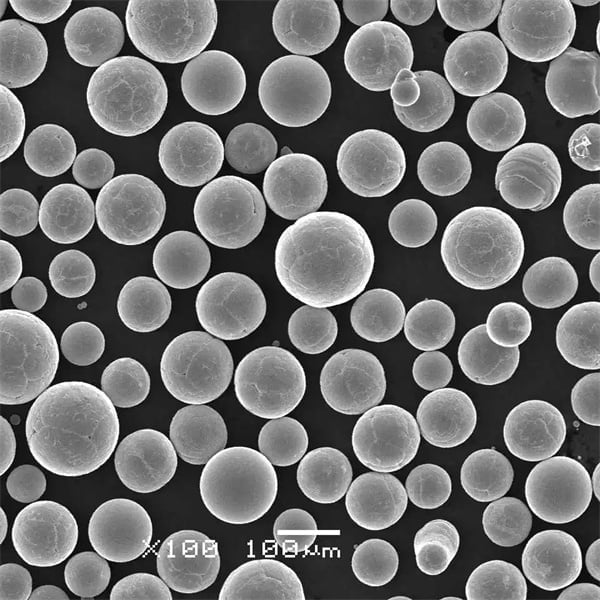
よくあるご質問
1.指向性エネルギー蒸着(DED)とは?
DEDは、レーザー、電子ビーム、プラズマアークなどの集束エネルギー源を使用して原料材料を溶融し、基板上に堆積させる3Dプリンティングプロセスである。このプロセスにより、複雑な形状の作成、既存部品の修理、積層造形が可能になる。
2.DEDで使用される一般的なエネルギー源の種類は?
DEDの一般的なエネルギー源には以下のようなものがある:
- レーザー 原料を溶かすために集光された高強度光線。
- 電子ビーム: 高エネルギー電子は真空環境で原料を溶かすのに使われる。
- プラズマアーク: 高温のプラズマアークで、材料を溶かして堆積させる。
3.DEDにはどのような素材が使用できますか?
DEDは様々な素材を使用することができる:
- 金属: スチール、チタン、アルミニウム、ニッケル合金など
- 金属マトリックス複合材料: セラミック粒子や繊維で強化された金属。
- ある種のセラミックス: 特殊な用途向け。
4.DEDの典型的な用途は?
DEDは以下のような様々な用途に使用されている:
- 修理とメンテナンス 航空宇宙、自動車、エネルギーなどの産業において、摩耗したり損傷した部品を修復する。
- カスタムパーツ製造: さまざまな産業向けに複雑なカスタマイズ部品を製造。
- プロトタイピング: 新しいデザインや製品の開発。
- 工具: 工具や金型の製造や修理
5.DED技術の恩恵を最も受ける産業は?
DEDの恩恵を受ける産業には以下のようなものがある:
- 航空宇宙 部品の修理と製造のため。
- 自動車: 部品生産と修理のため。
- エネルギーだ: タービンブレードやその他の重要部品の修理。
- メディカルだ: カスタムインプラントと補綴物。
シェアする
MET3DP Technology Co., LTDは、中国青島に本社を置く積層造形ソリューションのリーディングプロバイダーです。弊社は3Dプリンティング装置と工業用途の高性能金属粉末を専門としています。
関連記事
Met3DPについて
最新情報
製品

3Dプリンティングと積層造形用金属粉末






